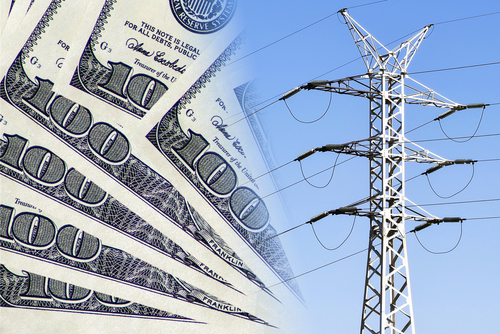Duke Energy Carolinas enacts North Carolina rate increases

Duke Energy Carolinas on Monday raised rates for North Carolina customers for the next three years.
The North Carolina Utilities Commission (NCUC) approved the utility’s rate increases in an order issued on Dec. 15, 2023.
“This commission order enables us to continue meeting the energy demands of a growing region while limiting annual rate increases and giving customers more cost certainty,” said Kendal Bowman, Duke Energy’s North Carolina president.
Now, for a typical residential customer using 1,000 kilowatt-hours (kWh) per month, the monthly bill increases 7.7 percent to $140.33 per month. This will be followed by a 3 percent increase in January 2025, and another in January 2026, according to Duke Energy Carolinas, a subsidiary of Duke Energy Corp. that provides electricity to 2.8 million customers in North Carolina and South Carolina.
The utility said that rates for North Carolina customers will remain below the national average of about $171 for typical residential customers, even after it completes roughly $7.7 billion in grid upgrades.
“We’ve made significant infrastructure upgrades in recent years to meet customer needs and expectations,” Bowman said.
In addition, the NCUC approved a net increase in retail revenues in year one of about $436 million (8.3 percent), followed by $173 million (3.3 percent) in year two and $165 million (3.1 percent) in year three. Customer bills already reflect an interim rate adjustment implemented on Sept. 1, 2023, said the company.
The NCUC also ordered Duke Energy Carolinas to establish a Customer Assistance Program (CAP) that reduces bills for the utility’s most vulnerable customers through a $42 monthly credit for 12 months.
Low-income customers already receiving help from the federal Low-Income Energy Assistance Program or the Crisis Intervention Program will be automatically enrolled in CAP beginning this month in partnership with the North Carolina Department of Health and Human Services.
Duke Energy also will refer CAP customers to weatherization and energy efficiency services that can help provide long-term solutions to reduce energy usage.
Additionally, as part of a settlement in the rate cases for both Duke Energy Carolinas and Duke Energy Progress, Duke Energy shareholders will contribute $10 million for health and safety repairs that would otherwise prevent low-income customers from qualifying for weatherization and other energy efficiency improvements.
For all customers, Duke Energy Carolinas also established new time-of-use rate options and energy efficiency programs to help lower their costs and reduce energy use.
“Our goal with these programs is to help offset the rate increase as much as possible by giving customers more control over their energy use,” said Bowman. “The programs are designed to reduce costs across the entire system, benefiting all customers.”
Another new aspect of Duke Energy Carolinas’ rate approval is the implementation of performance incentive mechanisms (PIMs) that will advance state policy goals through financial incentives and penalties that encourage utility performance in areas of shared interest with customers.
The NCUC approved three PIMs with annual incentives that grow up to $15 million in potential rewards, as well as $15 million in potential penalties for Duke Energy Carolinas across three areas: reliability, renewables integration and encouragement, and time-differentiated and dynamic rate enrollment.
A new page on Duke Energy’s website shows PIM monitoring, as well as other tracking metrics related to customer service, reliability, and electric vehicle integration.
